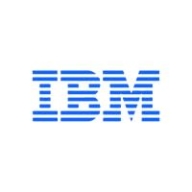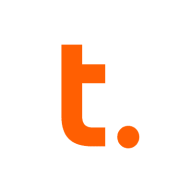

Teradata and IBM Informix are both leaders in the database management sector, competing with unique strengths. Teradata seems to have an upper hand due to its advanced analytics and parallel processing capabilities, although IBM Informix's ease of use and high availability are strong contenders.
Features: Teradata is recognized for its parallel processing, advanced analytics, and scalability, making it ideal for handling complex queries. It offers features like workload management and the capability to manage time-based data, which are highly valued by users. IBM Informix, known for its high performance in OLTP environments, offers flexibility with SQL and NoSQL integration and robust replication, making it effective in managing large data volumes efficiently.
Room for Improvement: Teradata could enhance its transaction processing and cost-effectiveness, especially in cloud solutions and support for unstructured data. Users want simplified cloud deployment. IBM Informix could improve in marketing and its replication features while expanding integration with modern analytics tools. Participation in the open-source community and better documentation are also desired.
Ease of Deployment and Customer Service: Teradata offers flexible deployment options across on-premises and various cloud environments. Its customer service is praised for responsiveness, though some note slow response times. IBM Informix is valued for its stable deployments both on-premises and in the hybrid cloud. Customer service is generally positive, though innovation in service delivery could be improved compared to competitors.
Pricing and ROI: Teradata is known for its high cost but significant ROI for enterprises needing robust processing capabilities. It offers more flexible pricing models, yet is geared toward high-end markets. Users acknowledge its high ROI through performance enhancements. IBM Informix provides more economical solutions with varied licensing, appealing to different enterprise sizes, with ROI justifiable for those within IBM's ecosystem.
| Product | Market Share (%) |
|---|---|
| Teradata | 4.2% |
| IBM Informix | 1.9% |
| Other | 93.9% |


| Company Size | Count |
|---|---|
| Small Business | 9 |
| Midsize Enterprise | 2 |
| Large Enterprise | 8 |
| Company Size | Count |
|---|---|
| Small Business | 26 |
| Midsize Enterprise | 12 |
| Large Enterprise | 50 |
IBM Informix is a widely used and scalable relational database management system designed to handle large amounts of data and high transaction volumes. It is known to provide exceptional performance, thanks to its Parallel Data Query Engine (PDQ) that enables parallel processing of queries and operations, significantly reducing response times for complex queries and large data sets. Additionally, Informix supports online operations like backup, restore, index maintenance, and table reorganization, minimizing downtime and ensuring continuous availability.
Informix provides robust high availability and replication features, including shared-disk clustering, remote data replication, and high-availability data replication (HDR). These features ensure data redundancy, failover protection, and disaster recovery capabilities, making it a reliable choice for mission-critical applications. Furthermore, Informix offers specialized features for data warehousing and analytics, such as in-database analytics, data compression, and parallel load capabilities, making it suitable for business intelligence (BI) and data analysis applications.
Informix can be deployed as an embedded database, allowing it to be tightly integrated with applications and systems, reducing overhead and simplifying deployment. It includes workload management capabilities, enabling organizations to prioritize and manage different types of workloads, such as online transaction processing (OLTP) and analytical queries, ensuring efficient resource utilization and meeting service-level agreements (SLAs). Informix also provides robust security features, including role-based access control, data encryption, auditing, and compliance with industry standards like FIPS 140-2 and Common Criteria.
Teradata is a powerful tool for handling substantial data volumes with its parallel processing architecture, supporting both cloud and on-premise environments efficiently. It offers impressive capabilities for fast query processing, data integration, and real-time reporting, making it suitable for diverse industrial applications.
Known for its robust parallel processing capabilities, Teradata effectively manages large datasets and provides adaptable deployment across cloud and on-premise setups. It enhances performance and scalability with features like advanced query tuning, workload management, and strong security. Users appreciate its ease of use and automation features which support real-time data reporting. The optimizer and intelligent partitioning help improve query speed and efficiency, while multi-temperature data management optimizes data handling.
What are the key features of Teradata?In the finance, retail, and government sectors, Teradata is employed for data warehousing, business intelligence, and analytical processing. It handles vast datasets for activities like customer behavior modeling and enterprise data integration. Supporting efficient reporting and analytics, Teradata enhances data storage and processing, whether deployed on-premise or on cloud platforms.
We monitor all Relational Databases Tools reviews to prevent fraudulent reviews and keep review quality high. We do not post reviews by company employees or direct competitors. We validate each review for authenticity via cross-reference with LinkedIn, and personal follow-up with the reviewer when necessary.